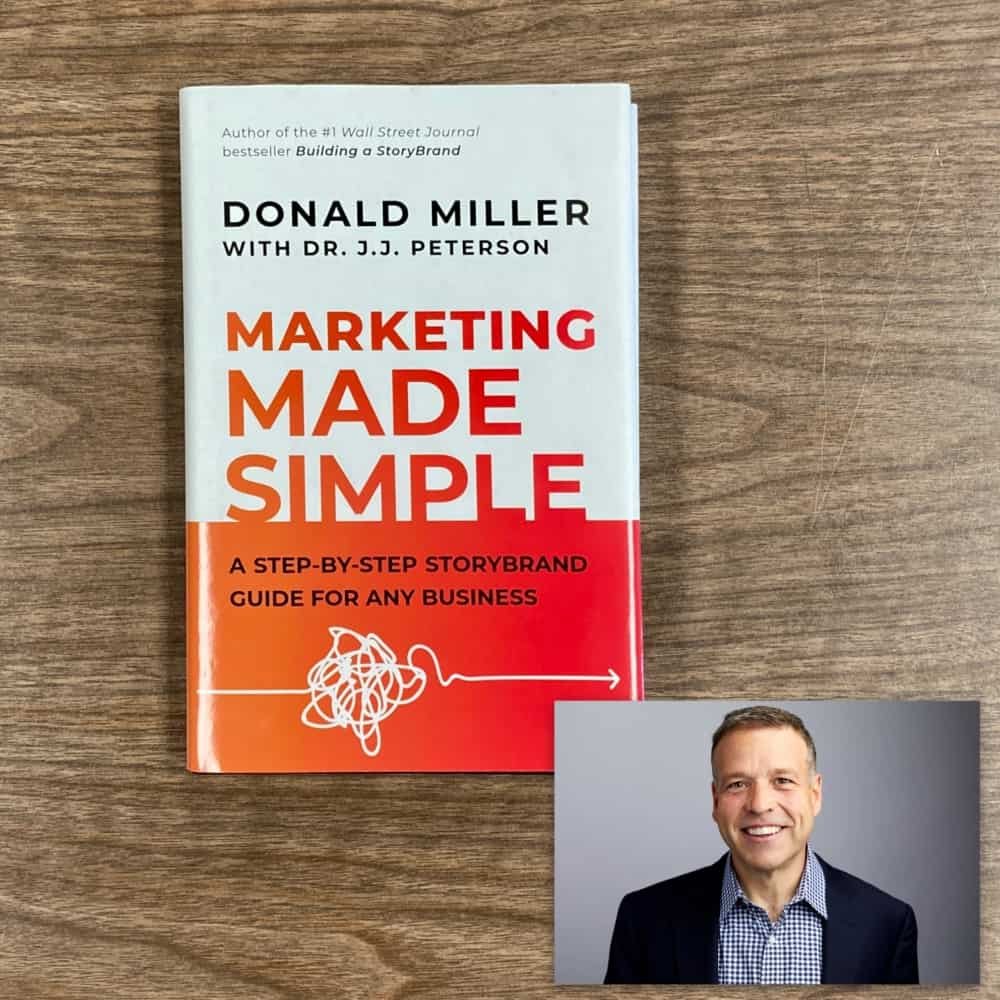What's a StoryBrand Sales Funnel and Why Do You Need One?
“Marketing should be easy and it should work. Whether you run a small business or a large business, the easiest and best marketing plan starts with a sales funnel.” - Donald Miller, Marketing Made Simple
When it comes to online marketing, a lot of business owners have the same problem: they struggle to get new leads and grow their business.
Why?
Two reasons:
One, they don’t have a website and they’re doing their marketing on social media.
Two, if they do have a website, it’s not written and designed around their customers’ problems and needs.
If you’re not getting new or good leads for your business, you need a different approach.
What is a Sales Funnel?
You’ve probably heard the term “sales funnel.”
Maybe you’ve wondered what the heck a sales funnel is.
Not knowing what it is, maybe you’ve also wondered if it’s something you need.
A sales funnel is simply a collection of online tools that helps you grow your business. And the tools are automated so they work all the time, even while you’re sleeping—which means you can spend your valuable time on things that are important to you.
Your sales funnel is the tactical part of your marketing approach. Its success depends on having a sound marketing strategy—which always comes first.
The Five Parts of Your Sales Funnel
An effective sales funnel relies on five essential parts:
A One-Liner
A website or landing page
A lead generator
A sales email campaign
A nurture email campaign
When we build a client’s sales funnel, we typically do it in three steps:
The One-Liner and website
The lead generator and sales email campaign
The nurture email campaign
Let’s look at each part of your funnel.
Your One-Liner
Your One-Liner tells people in simple terms who you help and how you help them. Think of it as your elevator pitch—an 8-second answer to “what do you do?”
As we’ve covered before, your One-Liner follows a simple formula:
[TARGET MARKET] struggles with [PROBLEM].
At [YOUR BUSINESS], we [SOLVE THE PROBLEM],
So they [DESIRED RESULT].
If you were a financial planner who works with Millennials, for example, you could say:
A lot of parents in their 40s wonder how they’ll cover the costs for their childrens’ college expenses as well as retirement. At Acme Financial Planning, we help you plan for your future financial needs so you can enjoy peace of mind today.
Your One-Liner is an important piece, almost foundational. Why? If you can’t tell people in a sentence or two who you help and the problem you solve for them, you’re not ready for the rest of your sales funnel. That’s why getting clear on your messaging strategy is so important.
Your Website or Landing Page
The centerpiece of your sales funnel is, naturally, your website.
It’s tempting to start your marketing tactics with social media—it’s free and easy (supposedly). But this is a mistake.
Your website is the one place where you have complete control over your message and your visitors’ experience of your business.
On social media, your business is subject to ever-changing policies and the whims of the algorithm. Each of these platforms—Facebook, TikTok, Instagram, LinkedIn—makes money the longer people stay on the platform. They don’t want to see users click away to your website. But that’s the very thing you want prospects to do—click over to your website.
So if you’re “all in” and dependent on a social media platform for leads, one day you could find you’ve lost 90% of your website traffic overnight.
Mermaids drawing unwitting sailors to their deaths in a watery grave—that’s social media until you have a sales funnel.
Again, the effectiveness of your website depends on a strong strategy and clear messaging. We use the StoryBrand framework to keep the message centered on your visitor’s problems and needs.
What platform should you use for your website?
For many small businesses, Squarespace is perfect. It strikes the right balance between functionality and ease of use.
Organizations that need more flexibility or features may find Wordpress a better fit. Specialty platforms like Shopify are designed for businesses that need a robust e-commerce presence.
Whatever you choose, make sure your website is at the center of your online marketing efforts.
Your Lead Generator
When visitors come to your site, you want them to do something.
You may want them to buy your product or service, request an estimate, or schedule an appointment.
But maybe that feels like a big first step for them. What can they do if they’re not ready for that?
Give them a low-risk, high-value, no-cost alternative to buying.
That’s your lead generator.
Your lead generator (also called a lead magnet or content offer) is usually some helpful information you provide in exchange for your visitor’s email address. It can be any of a number of things:
PDF download
Newsletter
Series of emails
Video
Sample of your product or service
You’ll need an email marketing system to deliver your lead generator. Squarespace has its own tool, Squarespace Campaigns, built into the platform and it will work for many small business owners.
If you need more flexibility or features, you have a lot of choices. MailerLite, AWeber, Constant Contact, Mailchimp, ConvertKit, and ActiveCampaign are all popular.
Once you have your visitor’s email address, you can continue to build the relationship until they’re ready to buy. Just follow up with…
Your Sales Email Campaign
With your visitor’s email address in hand, you’ll follow up with a series of automated messages. You’re reminding them of two things:
You’re able to solve their problem
You’re ready when they’re ready
Your sales campaign should include 5-6 messages in this sequence:
Deliver the lead generator
Problem + Solution - Discuss a problem they have and explain how you solve it
Customer Testimonial - Include a note from a customer who had the same problem as your prospect. This kind of social proof builds your credibility.
Overcome an Objection - What keeps prospects from buying? Price? Concern that your solution won’t work for them? Address it in this email.
Paradigm Shift - Get your prospect to think differently about the solution to their problem.
Sales Call - Invite your prospect to respond to your offer.
When you create these messages in your email marketing system, you only need to write them once. The email marketing system sends them automatically when a visitor signs up to receive your lead generator—this saves you time to focus on other aspects of your growing business.
Your Nurture Email Campaign
The last component of your sales funnel is your nurture email campaign.
Your nurture campaign is an ongoing campaign that delivers helpful information to the folks on your list. Unlike a sales campaign, though, the emphasis here is simply building trust and letting them know you can solve their problems.
Here are some ideas for your nurture campaign:
Weekly tips (recipes, leadership tips, marketing or social media tips, inspirational messages)
Helpful news (about your industry—not your insider news from your company)
New products/inventory
If you’re in the B2B space, any insight you can offer that helps your audience improve their business is fair game.
You can run your nurture campaign through your email marketing system, social media, and social networks.
Build Your Sales Funnel and Get New Leads
Your online marketing efforts are much more likely to succeed with the right tools and systems in place. For most businesses, that means a a clear marketing strategy and a sales funnel.
Save yourself time and money—and do your marketing right: build your sales funnel.
Contact me for a free 20-minute consultation to explore how you can use a sales funnel to grow your business.
Never miss an update
Get weekly marketing insights that help you grow your business. No spam—ever.









